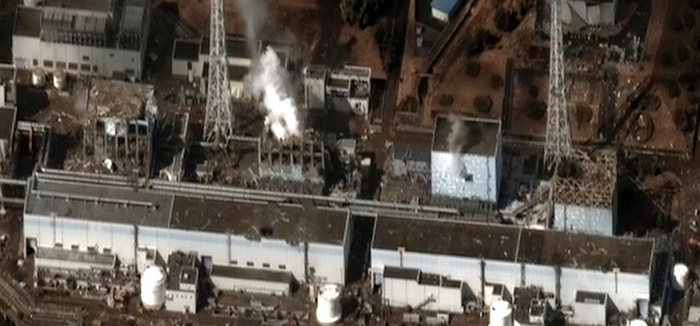Naoto Kan, former Prime Minister of Japan
- Details
- Written by Martin Arnold (Text), Patrick Bussmann, SES (Bild)
"Draw a 250-kilometre radius in Europe some time "
Naota Kan was the prime minister of Japan when the nuclear disaster occurred in Fukushima. He talks about his faith in nuclear energy, the disastrous accident and his current fight against nuclear energy.

Satellite Image of destroyed the Fukushima Daiichi Nuclear Power Plant. (Image: Digital Globe)
"Naturally, I was first concerned with the enormous damages and human suffering that spread after the earthquake and tsunami on 11 March 2011. Tepco reported that everything was under control. But an hour later, Tepco warned that there was neither cooling nor electricity in Fukushima Daiichi. A cold shiver ran down my spine. I am a physicist, not a nuclear expert, but because of Chernobyl I had an idea of what might now happen. A day later, Tepco reported that it had still had enough cooling water – a mistake as it later turned out as the displays were no longer working. Just as we were all getting out of a difficult situation, the meltdown took place. On 12th, 13th and 14th March, there were more explosions and meltdowns. In four days, three reactors were destroyed. In Chernobly, just one. But there were other reactors, a cooling pond with two dozen fuel rods and another nuclear power plant nearby. Had the cooling pond cracked, other blocks would also have exploded and other nuclear power plants would have been damaged – the catastrophe would have been ten, even 100 times worse. I had a worst-case scenario prepared immediately. The experts told me that we had to evacuate people within a radius of 250 kilometres, one after another. 50 million residents, including those in Tokyo, would have had to leave their houses or apartments. This would have affected 40 per cent of the population and a third of the country's area. Japan would no longer have been the country it was before. Have you ever drawn such a radius around a nuclear power plant in Switzerland, or in Germany or France? Millions of people and several countries were also affected. We were a hairsbreadth away from this. We were spared thanks to the personal and dangerous use of Tepco workers, firefighters and security personnel, all of whom risked their lives, and to incredible luck or divine intervention, however you want to see it. But the accident continues. This is something we're not allowed. Even today water has to be brought for cooling, which flows into the sea. Back then – and knowing the drama of Chernobyl where many people lost their lives fighting the disaster – I had to decide against Tepco's request to let their employees leave. They had to stay the course because they knew the facility.
There aren't any tornadoes
In Japan, errors by superiors aren't criticised. But errors were made. For instance, there was a security system at the nuclear power plant, but it wasn't put into operation. No one was there who could operate it. Maybe it hadn't even worked for a long time already. Afterwards, documents had disappeared or were incomplete in order not to incriminate anyone. Over the 45 years that the plant was up and running, expertise had been lost or hadn't been properly passed on. Fukushima Daiichi could have been built on a hill 35 metres high, in which case the tsunami wouldn't have caused any damage. Instead, the hill was removed during construction, and the nuclear power plant was built 10 metres above sea leave. At that time, the American builder General Motors had taken something into consideration, but the wrong thing: it assumed that a nuclear power plant built in the shelter of the cliffs would be safer from tornadoes. But in Japan there aren't any tornadoes, just tsunamis. Then again, the Americans didn't know this. I mention all of this to illustrate the chain of human error. You can list many reasons why such a disaster couldn't happen in Switzerland, Germany or France – until it happens. There are always people who support nuclear power plants. Of the 54 nuclear power plants that we have in Japan, two are currently back in operation. The people elected the current government and voted me out because of economic policies, not because of nuclear energy. The people no longer want nuclear power, but the government does.
And yet in Japan, the possibility exists for a new path. Already under my government, we introduced the feed-in tariff for renewable energy. The future belongs to solar energy, and when we use it, we achieve two goals: We don't jeopardise the world with nuclear energy nor do we alter the climate with fossil energy. And when there's less demand for oil, then there will be fewer wars over it and we'll end up doing something for peace."
Read more:
Old ideas in new packaging.






